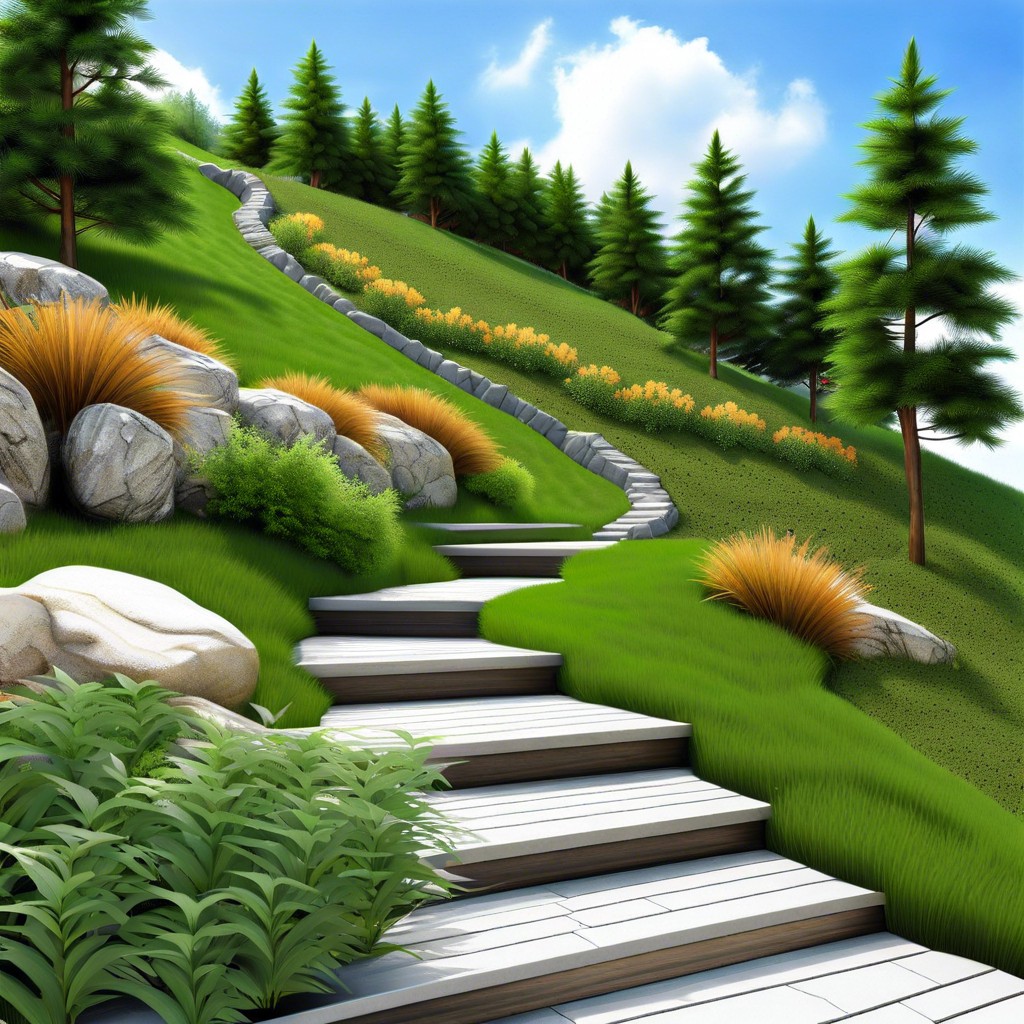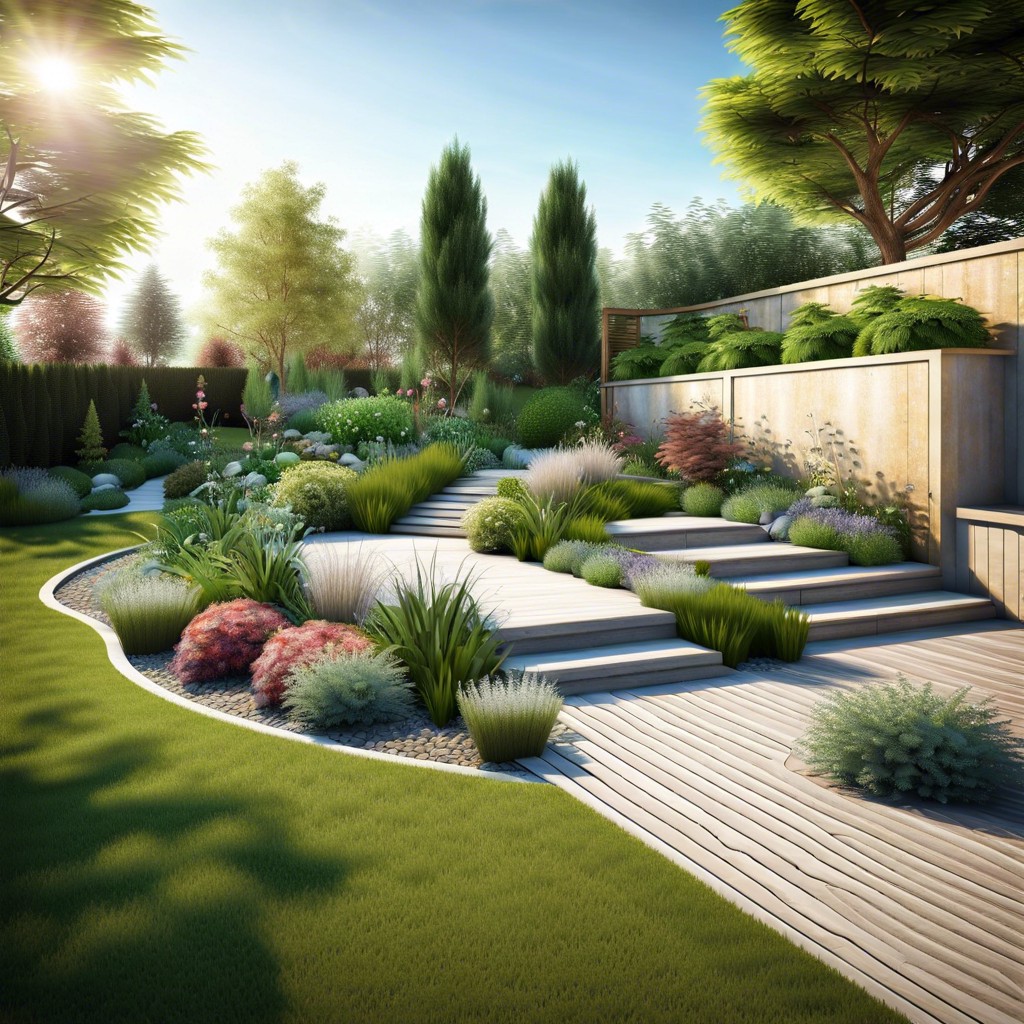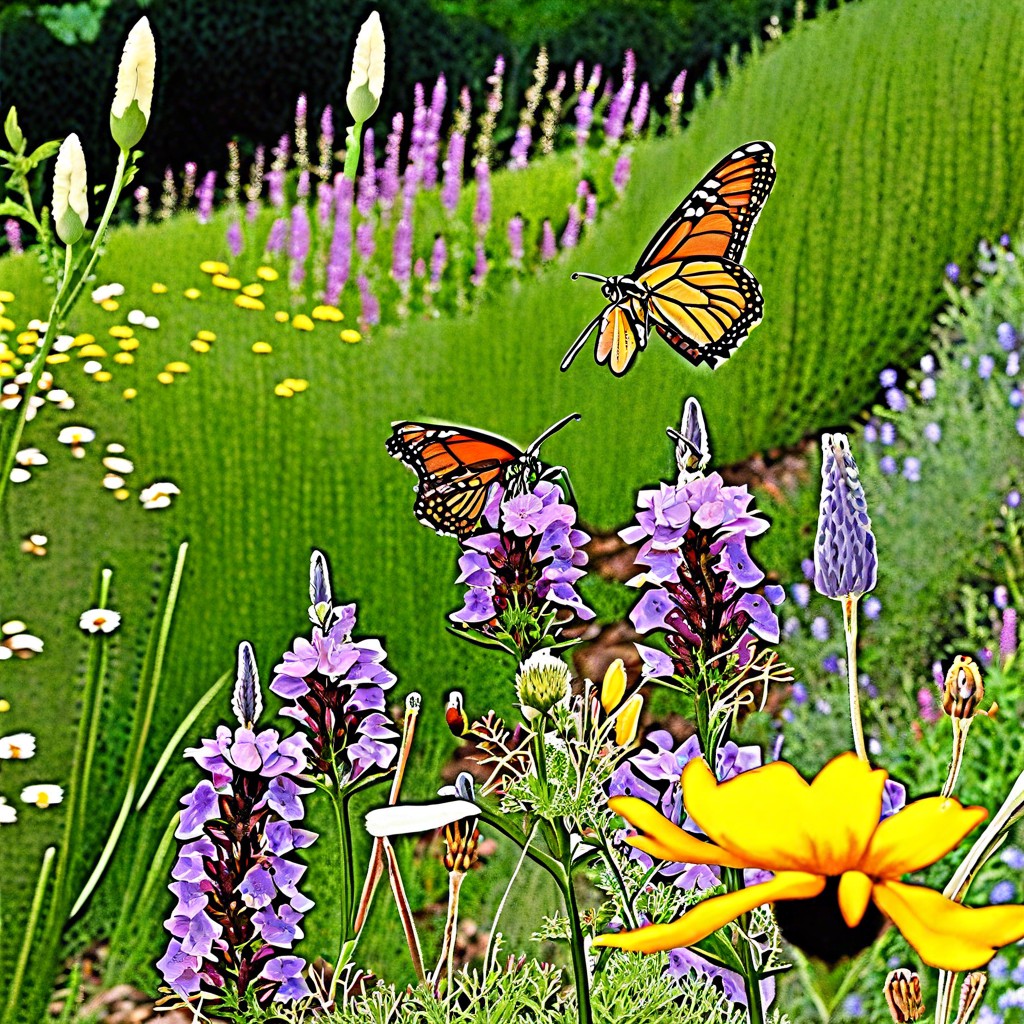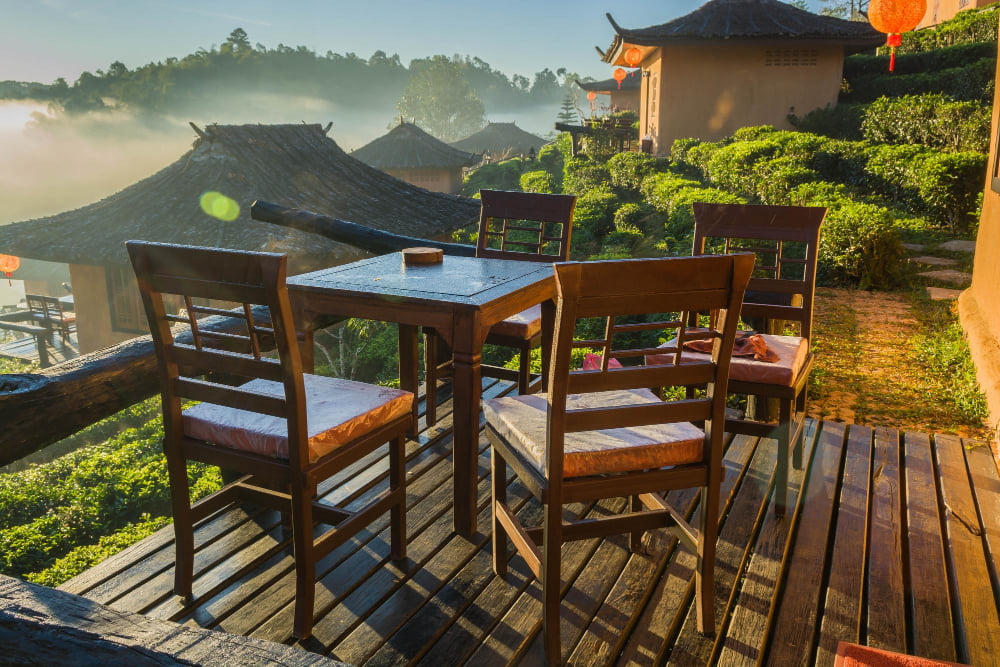Welcome to your guide on low maintenance hillside landscaping, where you’ll discover straightforward strategies to create a beautiful slope without the high upkeep.
Key takeaways:
- Evaluate slope: Consider angle, direction, sun exposure, and water behavior.
- Analyze soil and drainage: Understand soil type and plan for proper water flow.
- Consult professionals and design: Seek expert assistance to create a practical and beautiful blueprint.
- Choose appropriate plants: Opt for low-maintenance, drought-tolerant, and native species.
- Plan for erosion control and accessibility: Utilize terracing and stairways to prevent erosion and ease maintenance.
Evaluate Your Slope
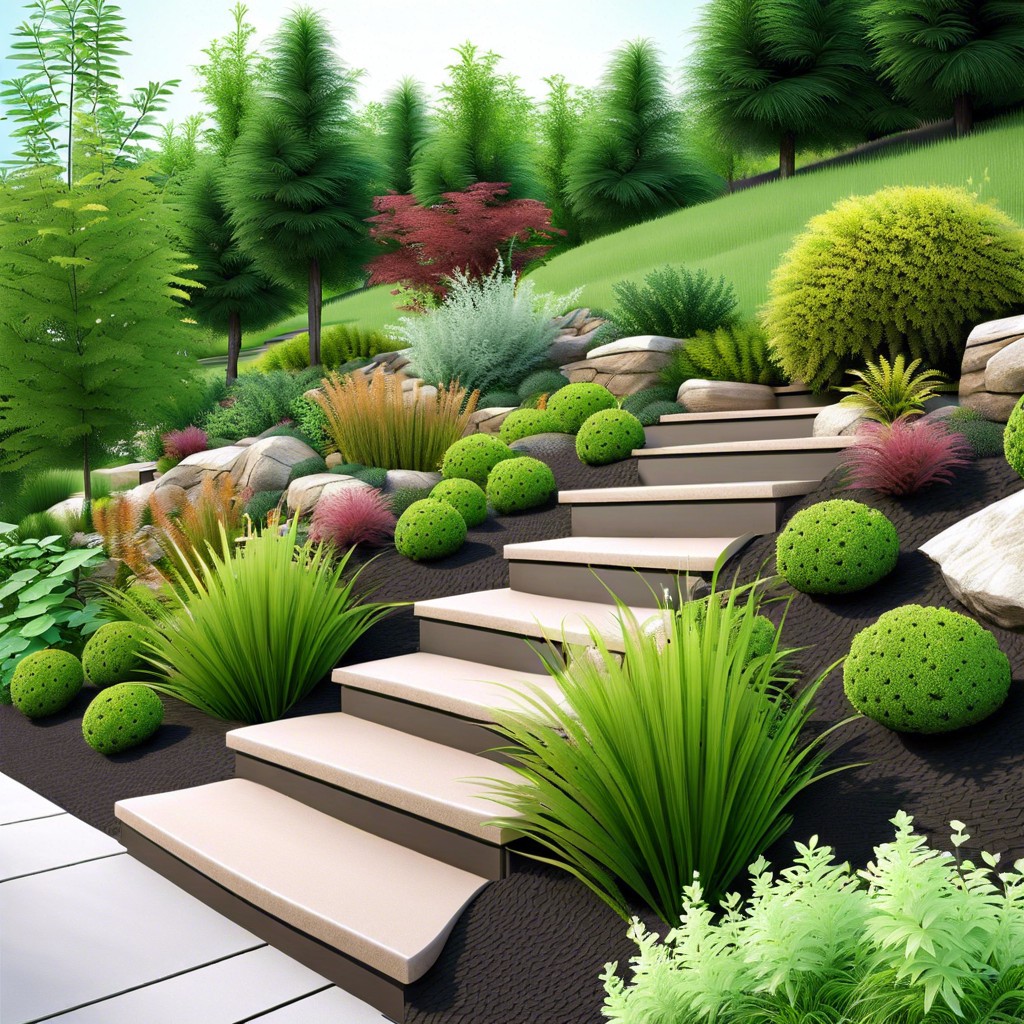
So, let’s kick things off by sizing up that incline in your backyard. Think of it as getting to know the playing field before the big game. Is your hill more of a gentle roll or a steep cliff? This isn’t just about the angle though; we’re also looking at the direction it faces. If it’s south-facing, you’ve hit the jackpot for sun-loving plants. North-facing? Hello, shade-friendly greenery!
You’ll want to grab your detective hat for a moment to observe how water behaves on your slope. Is it a waterslide during heavy rain or more of a desert? Puddles at the base might point to drainage issues we’ll need to sidestep later.
And let’s not forget about Mr. Sun and Mrs. Wind. Are they frequent visitors, or do they tend to RSVP ‘no’ to the party on your hillside? This isn’t just idle chit-chat. The amount of sun and wind can make or break your low maintenance landscape. Keep these factors in your back pocket—they’re golden nuggets for planting success.
Alright, who’s ready to roll up their sleeves and get to the fun part? With a little know-how and some elbow grease, we’re going to make that hillside the envy of the neighborhood, I promise!
Analyze the Soil and Consider Drainage
So, you’ve sized up your slope and are ready to dig a little deeper—literally. Let’s talk dirt. The type of soil on your hill can be a real game changer in how water waltzes through your landscape. Some soils grab onto moisture like they’re clinging onto a long-lost love, while others let it slip through their fingers with ease.
Here’s a fun fact to impress your garden club: soil with lots of clay is like that clingy friend—it doesn’t drain well and can be stubborn to work with. Sandy soil, on the other hand, is the life of the party; it drains faster than you can say “erosion hazard.” What you want is a happy medium, or what I like to call the Goldilocks zone—not too slow, not too fast, just right.
Now, before you start planting, think about the water’s path down your slope on a rainy day. You might need to play traffic cop and guide it with drainage lines, French drains, or even a charming dry creek bed that doubles as a rock garden. This doesn’t just prevent your soil from going on an unplanned journey; it also protects the plants from too much H2O.
Remember, observing the way water behaves on your slope is like spying on Mother Nature’s secrets. Do it right and before you know it, you’ll be the Sherlock Holmes of hillside landscaping, solving mysteries of muddiness and mastering moisture control. Keep your gumshoes on, because understanding your soil is fundamental in the hillside landscaping caper.
Consult a Professional and Draw Up a Design
Ah, the hillside conundrum, where gravity’s a frenemy and the land’s got a mind of her own. Rolling up your sleeves with an expert can be the game-changer you didn’t know you needed. They’ve got that eagle eye for detail and a knack for piecing together a puzzle that’d make Mother Nature proud. So, here’s your plan of action:
Get cozy with a local landscape architect or a specialist in hillside gardening. These folks have the green thumbs and brainpower to spot potential pitfalls you might miss. Water running amok? They’ll catch it. Soil slipping away like a rogue sled on snow? They’ve got it under control.
Your pro will wave their magic wand (or rather, wield their pen with precision) to draft a blueprint that’s not just practical but easy on the eyes. Think of it as a roadmap where X marks the spot for that hardy shrubbery or the perfect spot for a sun-loving flower that won’t wilt at the first sign of a tough climb.
Keep your chin up and your mind open during these chats. Remember, collaboration is key. Your insights are vital ingredients in this garden recipe. After all, it’s your slice of paradise they’re helping to bring to life.
Choose Appropriate Vegetation and Plant Selection
Picking the right plants for your hillside can be as exciting as flipping through a colorful seed catalog. You’ll want to go for species that are as low-fuss as your favorite pair of slippers. Drought-tolerant plants are your friends here, as they can tough it out on steep slopes without much water. Think of hardy grasses that spread their roots like a safety net against erosion.
Evergreen shrubs offer a year-round screen of green without asking for much in return. Groundcovers are the silent heroes, sprawling across the soil to hold it together and drape your hillside in shades of green. Be sure to high-five local varieties, because natives are already used to the neighborhood – meaning less work for you. And, if you enjoy a bit of color that doesn’t fade faster than a weekend, perennial flowers that come back each year could be your hillside’s best accessory.
Remember, plants with deep root systems are like anchors in a storm – they’ll hold onto that hillside tighter than a determined squirrel to a bird feeder. So, select these green guardians wisely, and your hill will be as chill as a lazy Sunday afternoon.
Plan for Erosion Control and Accessibility With Features Like Terracing and Stairways
Ah, erosion – nature’s way of saying “I’ll put this soil wherever I please, thank you very much!” But not to worry, you can outsmart gravity’s game of musical chairs with your hillside landscape. Terracing is like creating steps for your slope, which does two fabulous things: it breaks the hill into manageable, flat “seating” areas (think of an amphitheater) for your plants and decor, and it acts as a speed bump for water runoff. These leveled areas reduce soil erosion by holding everything in place, giving water a chance to soak in rather than making a mad dash to the bottom of the hill.
Now, let’s talk stairways, not the stairway to heaven mind you, although these steps will make maintaining your hillside garden heavenly! Stairs offer you a way to comfortably ascend your personal Everest. They invite you on a gentle climb through your garden while also reinforcing the soil. Plus, they’re an excellent opportunity to add a decorative touch. Think of them as the spine of your hillside, providing structure that not only serves a purpose but can look as classy or funky as you wish.
In a nutshell, with terracing and stairways, you’re creating a hillside haven that stands its ground against erosion while granting you easy access to frolic among your foliage. Welcome to your landscape, engineered to save your back and delight your eyes!
